Topics
Category
Era
Hallie Q. Brown Community Center, St. Paul
Hallie Q. Brown Community Center (HQB) was founded in 1929 to support the growing Black community of St. Paul. Established to promote social harmony and help people find adequate housing, HQB also provided a place of refuge and solace. It became the second-largest neighborhood center in St. Paul, complementing the Phyllis Wheatley Settlement House in Minneapolis.
HQB’s origins lie in the Settlement Housing Movement, ca. 1880s–1920s. As European immigrants joined Black migrants from the South in northern US cities, social reformers founded settlement houses: organizations that provided services like education, healthcare, and childcare to the newcomers. While European immigrants benefited, Black communities did not. The overall belief among many of the white settlement leaders was that “Blacks could better progress on their own, through separate self-help or racially oriented organizations, but not through the settlement house movement.” As a result, many Black women reformers participated in a separate settlement-housing movement.
As more Black Americans migrated from the South to St. Paul, community leaders saw a need for social centers for Blacks, who were at that time barred from many local facilities. The local Odd Fellows and Masons—two St. Paul organizations—then came together to purchase six lots on Aurora Avenue between Kent and Mackubin Streets. This led to the formation of the Union Hall Association in 1914.
With funding from the YWCA and the St. Paul Urban League from 1923 through 1929, the Union Hall Association hosted programs and provided meeting spaces. St. Paul Urban League Executive Secretary Elmer A. Carter surveyed additional sites, and in or around January 1929, members of an advisory committee met to discuss ideas for a new community center.
In April of 1929, the emerging organization hired I. Myrtle Carden as its executive director and organized discussions about what its name should be. The board and community members decided to select the name through an essay contest that invited students to profile a prominent leader. Herbert Howell, a student from Hamline University, won the contest with an essay about the suffragist, educator, and activist Hallie Q. Brown. Thus, Hallie Q. Brown Community Center was born.
During Carden’s tenure as director, HQB organized a daycare, young-adult and seniors programs, recreation opportunities, and meetings. It became a hub for local groups like the Golden Agers, the St. Paul Women’s Council, and the Men’s Council. Unique for its time, the center exposed participants to activities that many African Americans could not access, such as “camping, archery, athletics[,] debates, home economics, [and] nursery school.” Known as “Hallie,” the center offered an escape from the daily stresses of living in racially segregated America, including racist housing covenants.
During the early 1960s, the Minnesota Highways Department collaborated with the Federal Highways Administration to build Interstate 94. The construction displaced thousands of residents in St. Paul’s Rondo neighborhood—the home of HQB and “the heart of Saint Paul’s black community.” Newly hired director Alice S. Onqué and other staff at HQB pondered difficult questions: “Where to relocate?” “How to best serve the community?”
After conducting a community survey, HQB chose to relocate to the south side of I-94. Henry R. Thomas, the center’s third executive director, helped raise funds for the construction of a new building, as did HQB’s board of directors, and in 1972 the Martin Luther King Jr. Community Recreation Center was built at 270 North Kent Street.
During the 1970s, HQB offered a myriad of arts programming that both served the community and reflected the diversity of needs within it. The center during this time also offered child development programs, juvenile delinquency prevention, activities for senior citizens, cultural arts opportunities, and job development. Program developers “recognized the fact that visual art, music, literature, and theater can strengthen collective identity, combat racial stereotypes, and affirm a sense of self-worth.” In 1976, HQB was awarded a $150,000 grant to support its cultural arts programming. This funding led to the hiring of Lou Bellamy, who founded Penumbra Theatre Company inside the MLK Community Center in the same year.
In the 2020s, HQB functions as a multi-service center that prides itself on serving the community; promoting African American heritage; inspiring personal growth, self-sufficiency, and self-determination; and developing community leadership. It has continually expanded its outreach efforts to meet the needs of all groups seeking a supportive service agency, including the Twin Cities’ growing Hmong, Somali, and Latino populations.
Bibliography
"Families Who Nurture, Individuals who Serve: the Role of African Americans in Community Service in St. Paul," ca. 1995. In folder 13, box 26 of Family Service of St. Paul publications and print materials, 1911–2004. Social Welfare History Archives, University of Minnesota Libraries, Minneapolis.
https://umedia.lib.umn.edu/item/p16022coll427:36
Hallie Q. Brown Community Archives (HQBCA).
https://hqbca.libraryhost.com
Hallie Q. Brown Community Center. History of Hallie Q. Brown Community Center, Inc. https://www.hallieqbrown.org/site/index.php/about
Hallie Q. Brown Community House records, 1921–1996 (bulk 1940–1967)
Manuscripts Collection, Minnesota Historical Society, St. Paul
Description: The records include miscellaneous administrative correspondence; minutes of the board, the steering committee, and many of the program units that operated under the aegis of the house; photographs, clippings, flyers, and other publicity materials; and some financial miscellany.
http://www2.mnhs.org/library/findaids/00368.xml
Henry, Thomas. R. “Hallie Q. Brown Community Center, Inc.” St. Paul: Minnesota Historical Society, 1966. Available at the Minnesota Historical Society library as HV4196.S2 H17 1966.
“History of Hallie Q. Brown Disclosed in Pageant at Annual Dinner.” Minneapolis Spokesman, February 7, 1936.
https://www.mnhs.org/newspapers/lccn/sn83025247/1936-02-07/ed-1/seq-1
Hounmenou, Charles. “Black Settlement Houses and Oppositional Consciousness.” Journal of Black Studies 43, no. 6 (2012): 646–666.
Johnson, Tiffany. “Hallie Q. Brown Community Center Celebrates 90 Years of Service.” Minnesota Spokesman-Recorder, November 27, 2019.
https://spokesman-recorder.com/2019/11/27/hallie-q-brown-community-center-celebrates-90-years-of-service
Mahala, Macelle. Penumbra: The Premier Stage for African American Drama. Minneapolis: University of Minnesota Press, 2013.
Onqué, Alice S. “History of the Hallie Q. Brown Community House: Plan B Report.” Minneapolis: University of Minnesota School of Social Work, 1959. Available at the Minnesota Historical Society library as HV4196.S2 H1o.
Twin Cities Boulevard. I-94 Harms Minneapolis and Saint Paul Communities.
https://www.twincitiesboulevard.org/learn-more/i-94-harms-our-communities
Related Resources
Primary
Teen Times, 1946–1947.
Editor's note: Teen Times was a newsletter created by high school students who participated in the Hallie Q. Brown Community Center’s teen group between 1945 and 1948.
https://newspapers.mnhs.org/jsp/browse.jsp?collection_filter=d89b72c0-21bc-4fcb-800d-2da276a1945e
Secondary
Gasman, Marybeth, and Roger L. Geiger, eds. Higher Education for African Americans Before the Civil Rights Era, 1900–1964: Perspectives on the History of Higher Education, Volume Twenty-Nine, 2012. New Brunswick, NJ: Transaction Publishers, 2012.
Hatch, James V., and Erroll G. Hill. A History of African American Theatre. New York: Cambridge University Press, 2003.
Quinn-Lasch, Elizabeth. Black Neighbors: Race and the Limits of Reform in the American Settlement Movement, 1890–1945. Chapel Hill, NC: University of North Carolina Press, 1993.
“Settlement Houses." In Encyclopedia of the United States in the Nineteenth Century, edited by Paul Finkelman, vol. 3. New York: Charles Scribner's Sons, 2001.
Web
CultureBrokers Foundation, Inc. 2008. “Hallie Q. Brown Community Center.” Saint Paul Historical.
https://saintpaulhistorical.com/items/show/260
“The Hallie Q. Brown Community Center.” Youtube video, 4:18. Hallie Q. Brown Community Center, February 15, 2022.
https://youtu.be/EkagTXuh1PM?si=nCFH3lJ1jFG-CrB2
Related Images
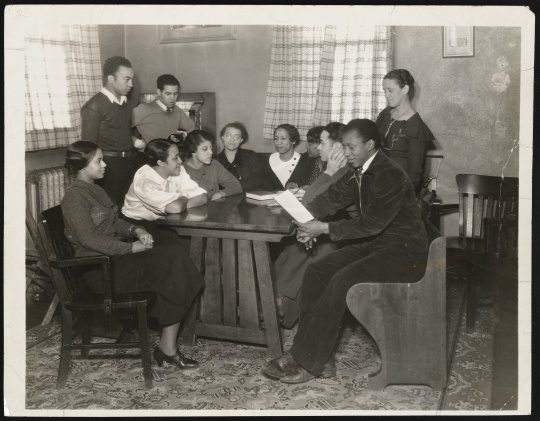
Hallie Q. Brown House staff, 1935
Holding Location
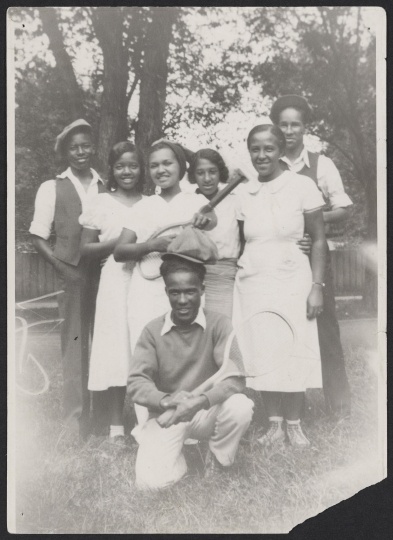
Hallie Q. Brown Vagabond Club
Holding Location
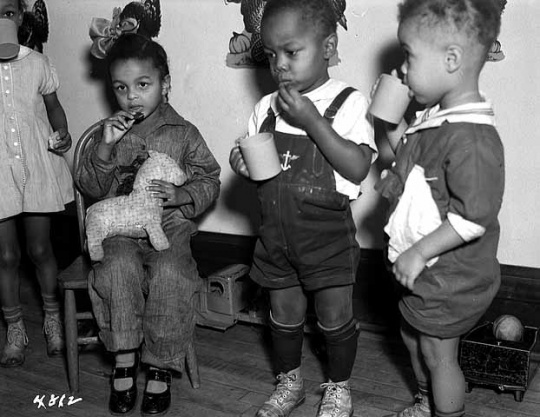
Thanksgiving party at Hallie Q. Brown House
Holding Location
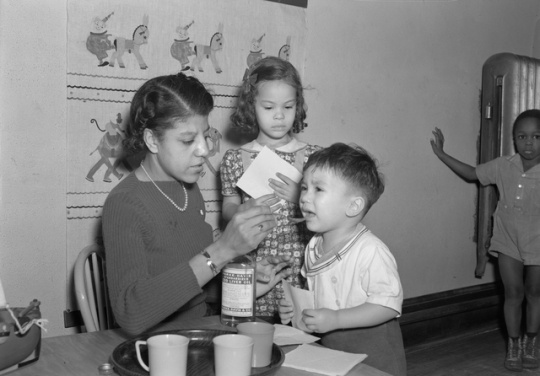
Child care at Hallie Q. Brown House
Holding Location
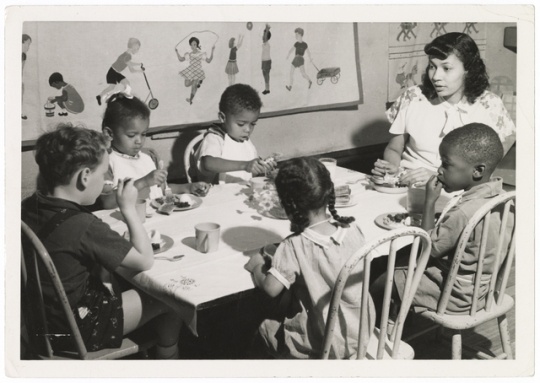
Lunch time at Hallie Q. Brown nursery school
Holding Location
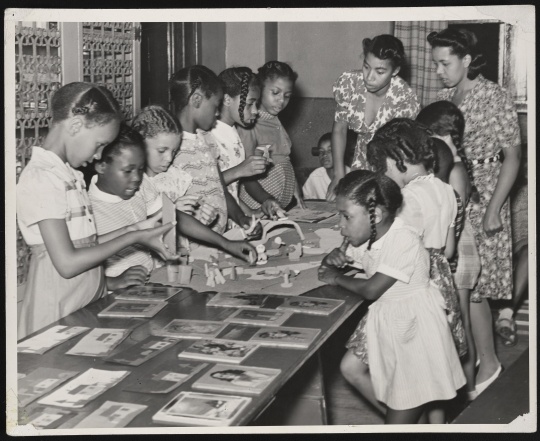
Handicrafts exhibition at Hallie Q. Brown House
Holding Location
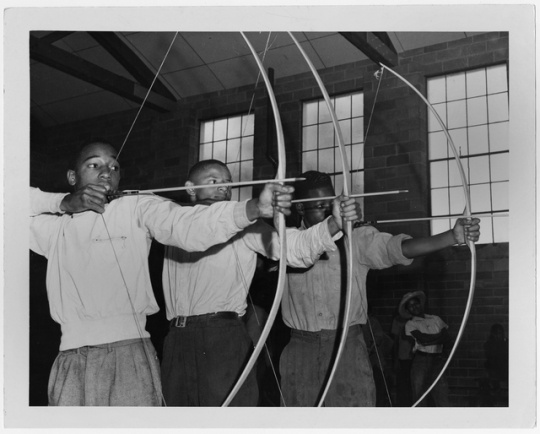
Archery class at Hallie Q. Brown House
Holding Location
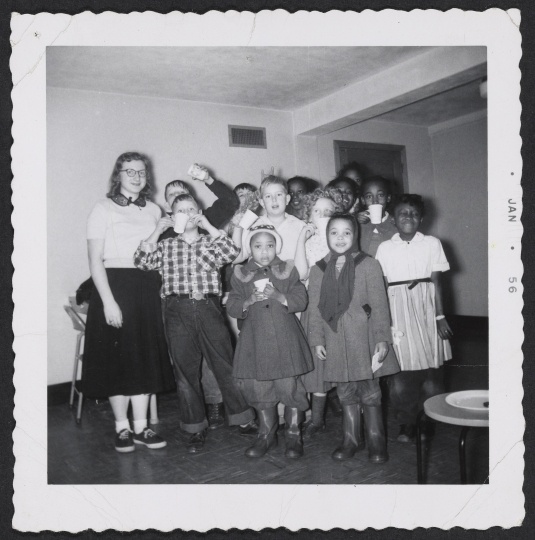
Junior choral club, Hallie Q. Brown House
Holding Location
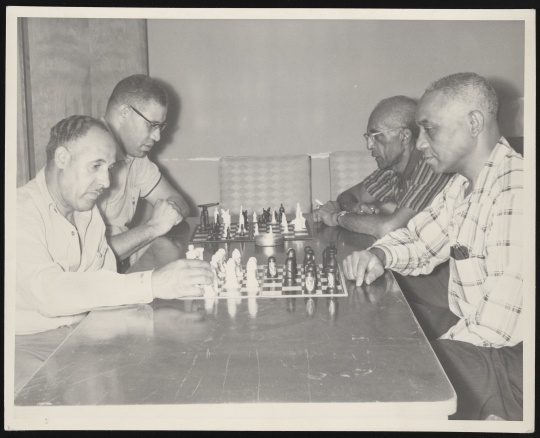
Golden Agers playing chess at Hallie Q. Brown House
Holding Location
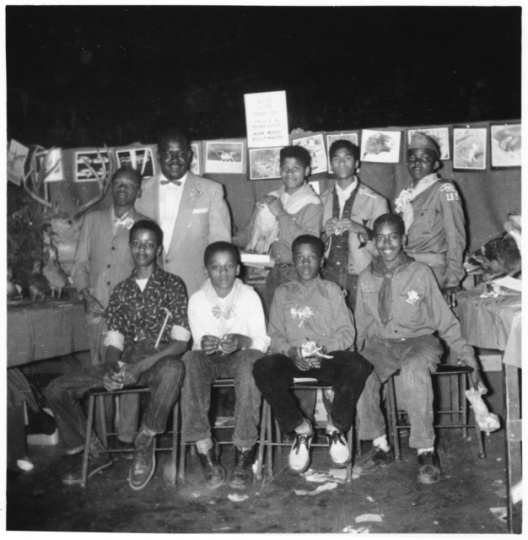
Hallie Q. Brown Boy Scout troop
Holding Location
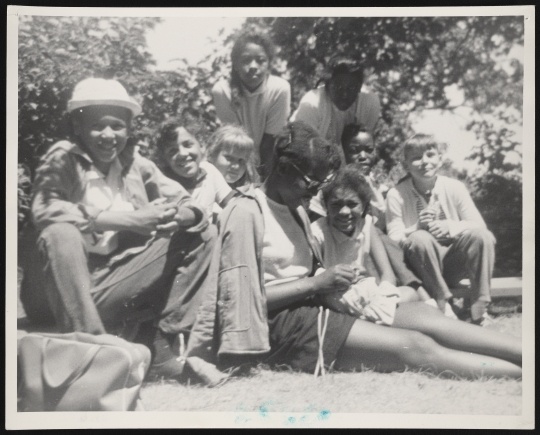
Fun in the Sun day camp
Holding Location

Alice S. Onqué and other Hallie Q. Brown staff
Holding Location
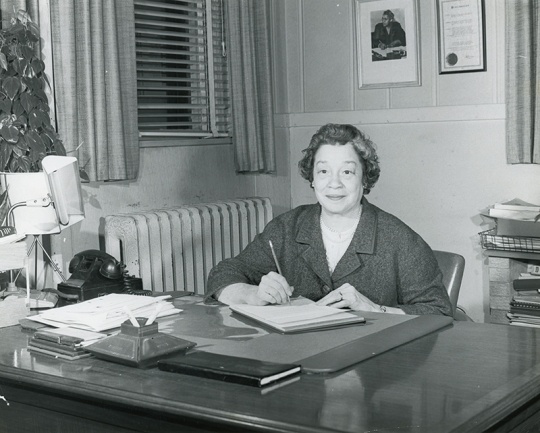
Alice S. Onqué
Holding Location
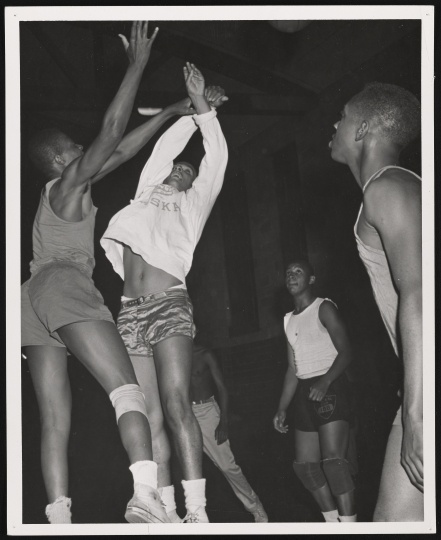
Basketball game at Hallie Q. Brown
Holding Location
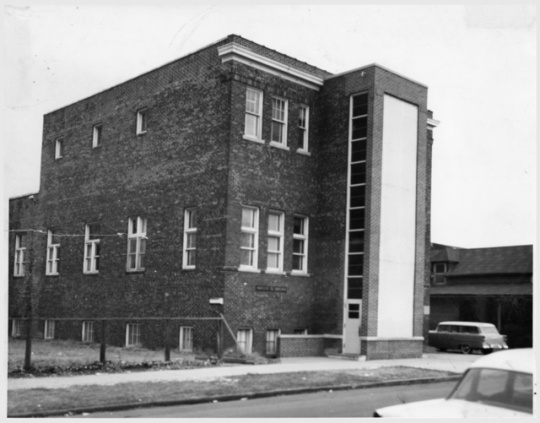
Hallie Q. Brown building
Holding Location
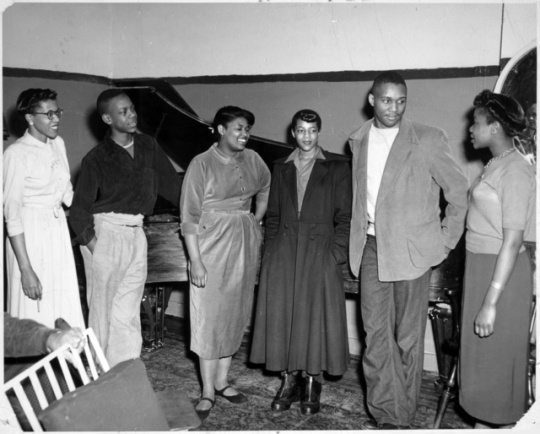
Hallie Q. Brown Teen Club
Holding Location
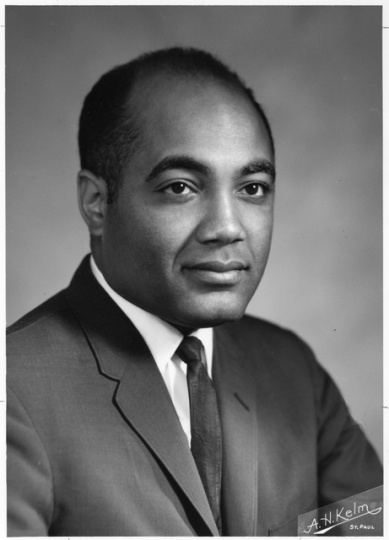
Frank C. Kent
Holding Location
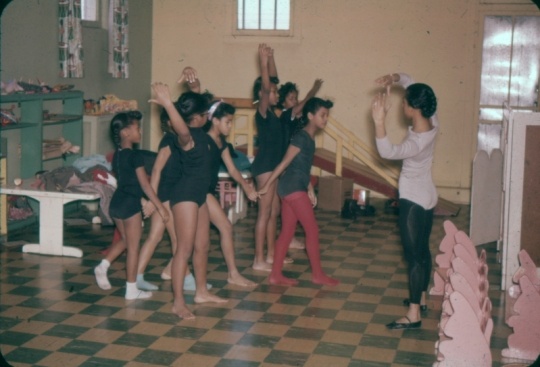
Juniors modern dance class
Holding Location
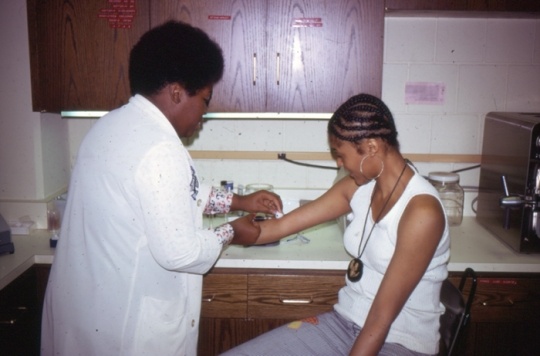
Sharon and Willie at Hallie Q. Brown Community Center
Holding Location
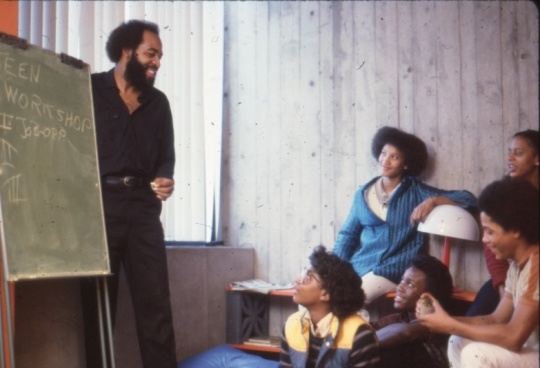
Teen workshop at Hallie Q. Brown Community Center
Holding Location
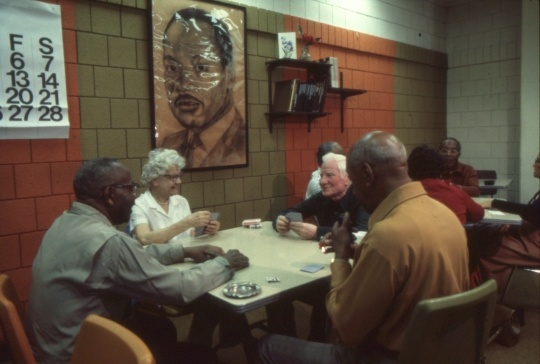
Elders playing cards
Holding Location
Related Articles
Turning Point
Under the leadership of I. Myrtle Carden in the 1930s, Hallie Q. Brown House (later renamed Hallie Q. Brown Community Center) becomes the second-largest neighborhood center in St. Paul, serving the Rondo community. It provides a meeting place for the Black community and an escape from the daily hardships of living in racially segregated America.
Chronology
1908
1914
1923
1926
1928
1929
1930
1937
1949
1960
1964
1965–1966
1967
1970
1972
1976
2018
2021
Bibliography
"Families Who Nurture, Individuals who Serve: the Role of African Americans in Community Service in St. Paul," ca. 1995. In folder 13, box 26 of Family Service of St. Paul publications and print materials, 1911–2004. Social Welfare History Archives, University of Minnesota Libraries, Minneapolis.
https://umedia.lib.umn.edu/item/p16022coll427:36
Hallie Q. Brown Community Archives (HQBCA).
https://hqbca.libraryhost.com
Hallie Q. Brown Community Center. History of Hallie Q. Brown Community Center, Inc. https://www.hallieqbrown.org/site/index.php/about
Hallie Q. Brown Community House records, 1921–1996 (bulk 1940–1967)
Manuscripts Collection, Minnesota Historical Society, St. Paul
Description: The records include miscellaneous administrative correspondence; minutes of the board, the steering committee, and many of the program units that operated under the aegis of the house; photographs, clippings, flyers, and other publicity materials; and some financial miscellany.
http://www2.mnhs.org/library/findaids/00368.xml
Henry, Thomas. R. “Hallie Q. Brown Community Center, Inc.” St. Paul: Minnesota Historical Society, 1966. Available at the Minnesota Historical Society library as HV4196.S2 H17 1966.
“History of Hallie Q. Brown Disclosed in Pageant at Annual Dinner.” Minneapolis Spokesman, February 7, 1936.
https://www.mnhs.org/newspapers/lccn/sn83025247/1936-02-07/ed-1/seq-1
Hounmenou, Charles. “Black Settlement Houses and Oppositional Consciousness.” Journal of Black Studies 43, no. 6 (2012): 646–666.
Johnson, Tiffany. “Hallie Q. Brown Community Center Celebrates 90 Years of Service.” Minnesota Spokesman-Recorder, November 27, 2019.
https://spokesman-recorder.com/2019/11/27/hallie-q-brown-community-center-celebrates-90-years-of-service
Mahala, Macelle. Penumbra: The Premier Stage for African American Drama. Minneapolis: University of Minnesota Press, 2013.
Onqué, Alice S. “History of the Hallie Q. Brown Community House: Plan B Report.” Minneapolis: University of Minnesota School of Social Work, 1959. Available at the Minnesota Historical Society library as HV4196.S2 H1o.
Twin Cities Boulevard. I-94 Harms Minneapolis and Saint Paul Communities.
https://www.twincitiesboulevard.org/learn-more/i-94-harms-our-communities
Related Resources
Primary
Teen Times, 1946–1947.
Editor's note: Teen Times was a newsletter created by high school students who participated in the Hallie Q. Brown Community Center’s teen group between 1945 and 1948.
https://newspapers.mnhs.org/jsp/browse.jsp?collection_filter=d89b72c0-21bc-4fcb-800d-2da276a1945e
Secondary
Gasman, Marybeth, and Roger L. Geiger, eds. Higher Education for African Americans Before the Civil Rights Era, 1900–1964: Perspectives on the History of Higher Education, Volume Twenty-Nine, 2012. New Brunswick, NJ: Transaction Publishers, 2012.
Hatch, James V., and Erroll G. Hill. A History of African American Theatre. New York: Cambridge University Press, 2003.
Quinn-Lasch, Elizabeth. Black Neighbors: Race and the Limits of Reform in the American Settlement Movement, 1890–1945. Chapel Hill, NC: University of North Carolina Press, 1993.
“Settlement Houses." In Encyclopedia of the United States in the Nineteenth Century, edited by Paul Finkelman, vol. 3. New York: Charles Scribner's Sons, 2001.
Web
CultureBrokers Foundation, Inc. 2008. “Hallie Q. Brown Community Center.” Saint Paul Historical.
https://saintpaulhistorical.com/items/show/260
“The Hallie Q. Brown Community Center.” Youtube video, 4:18. Hallie Q. Brown Community Center, February 15, 2022.
https://youtu.be/EkagTXuh1PM?si=nCFH3lJ1jFG-CrB2






















